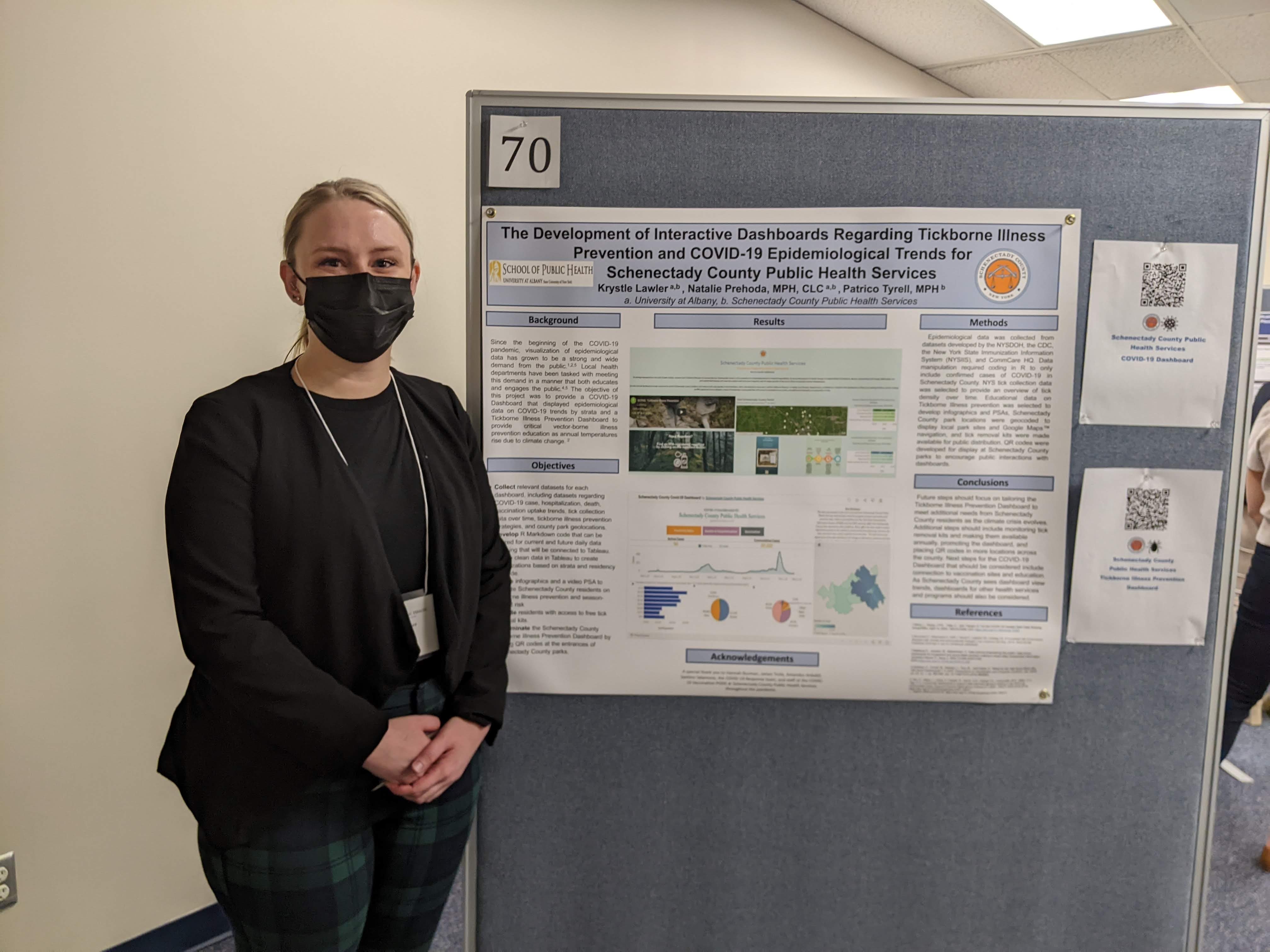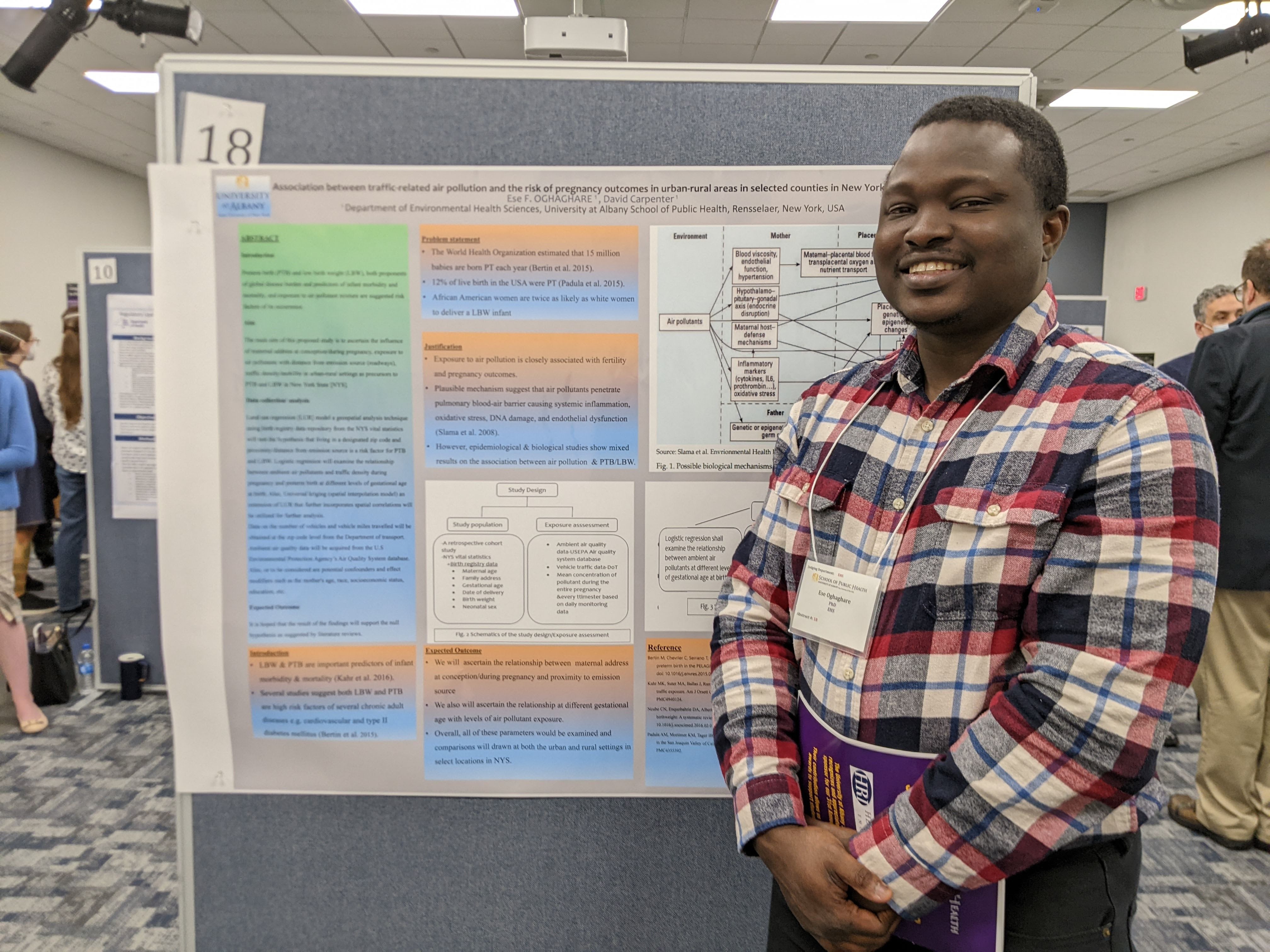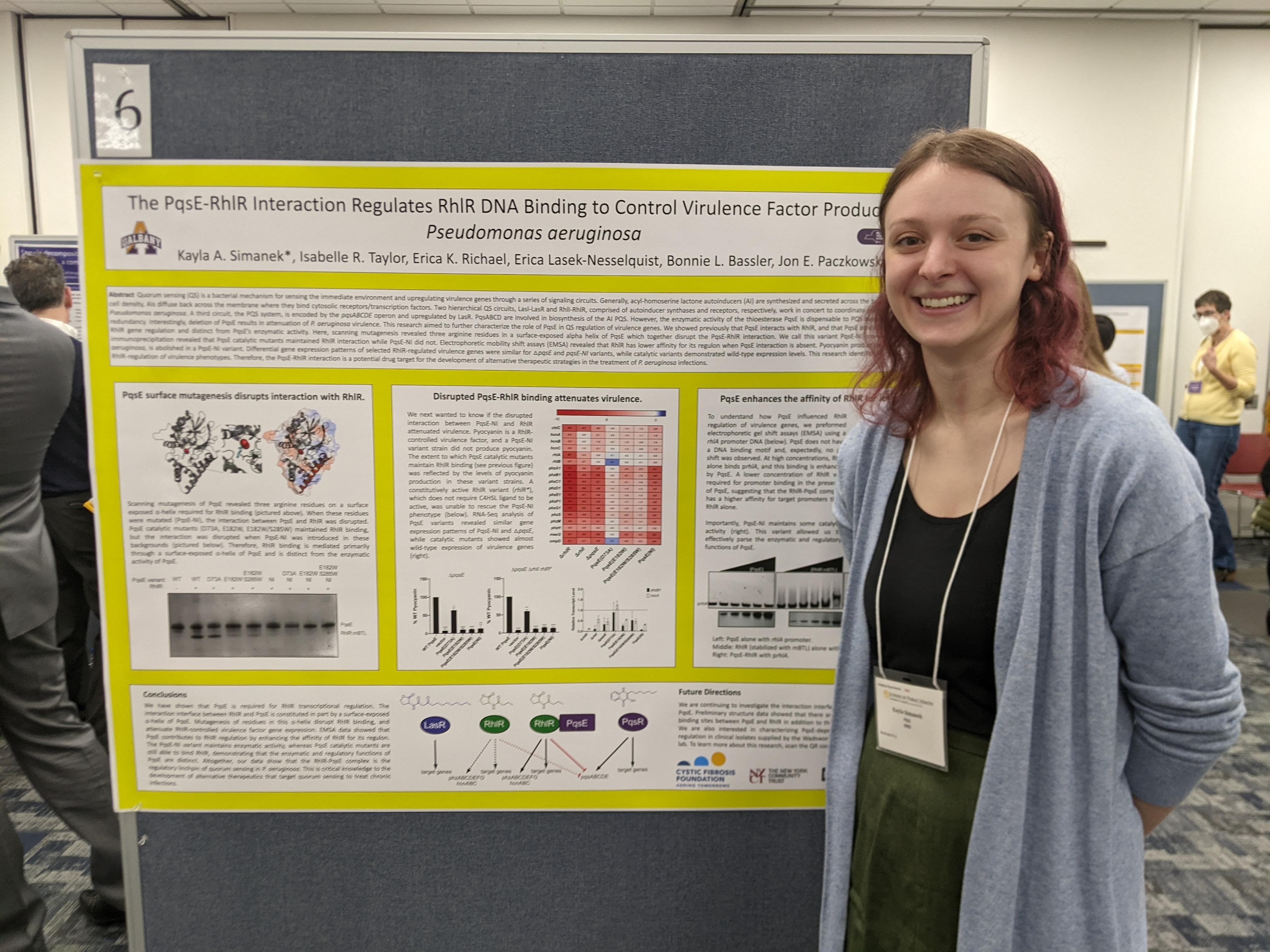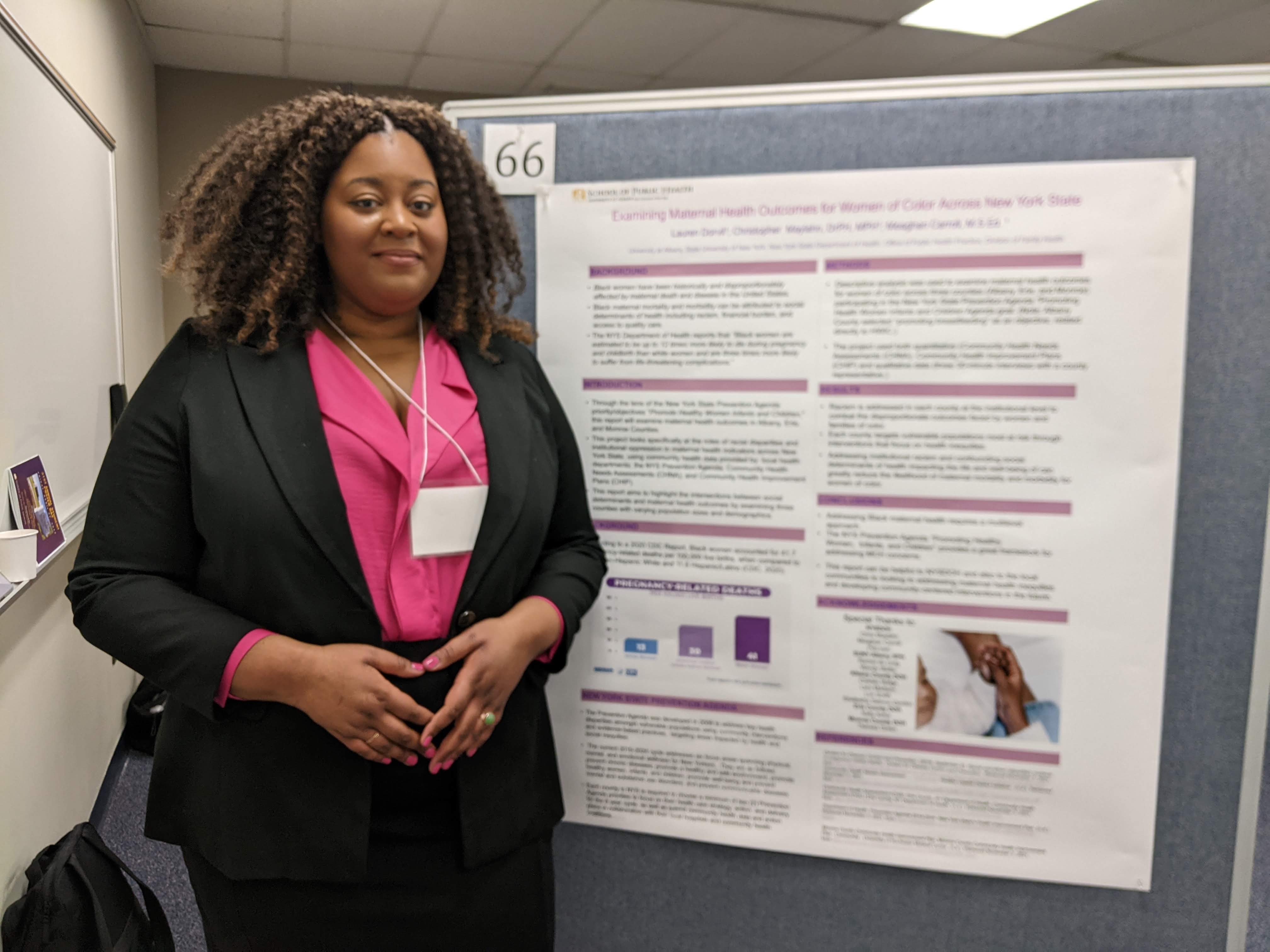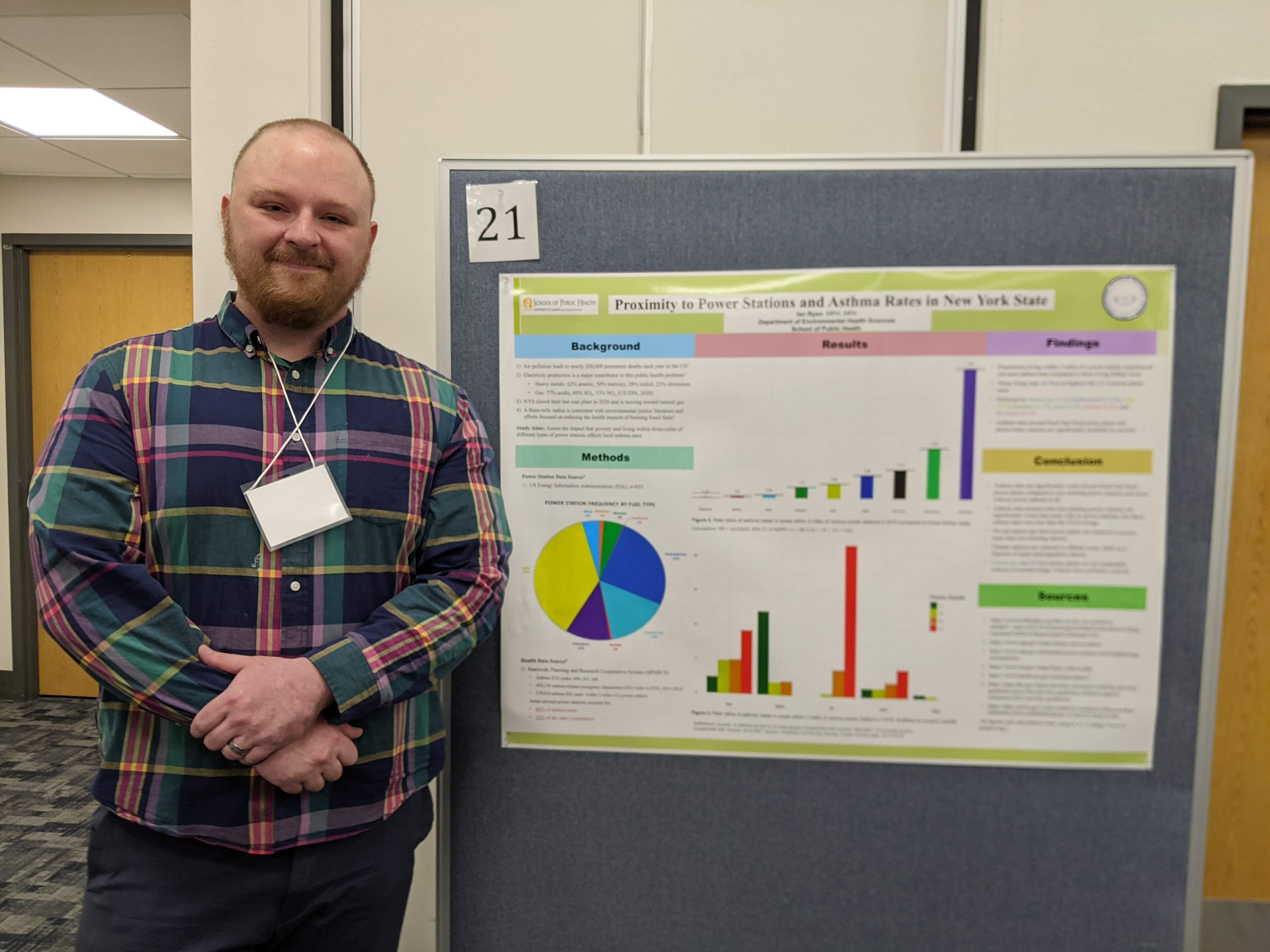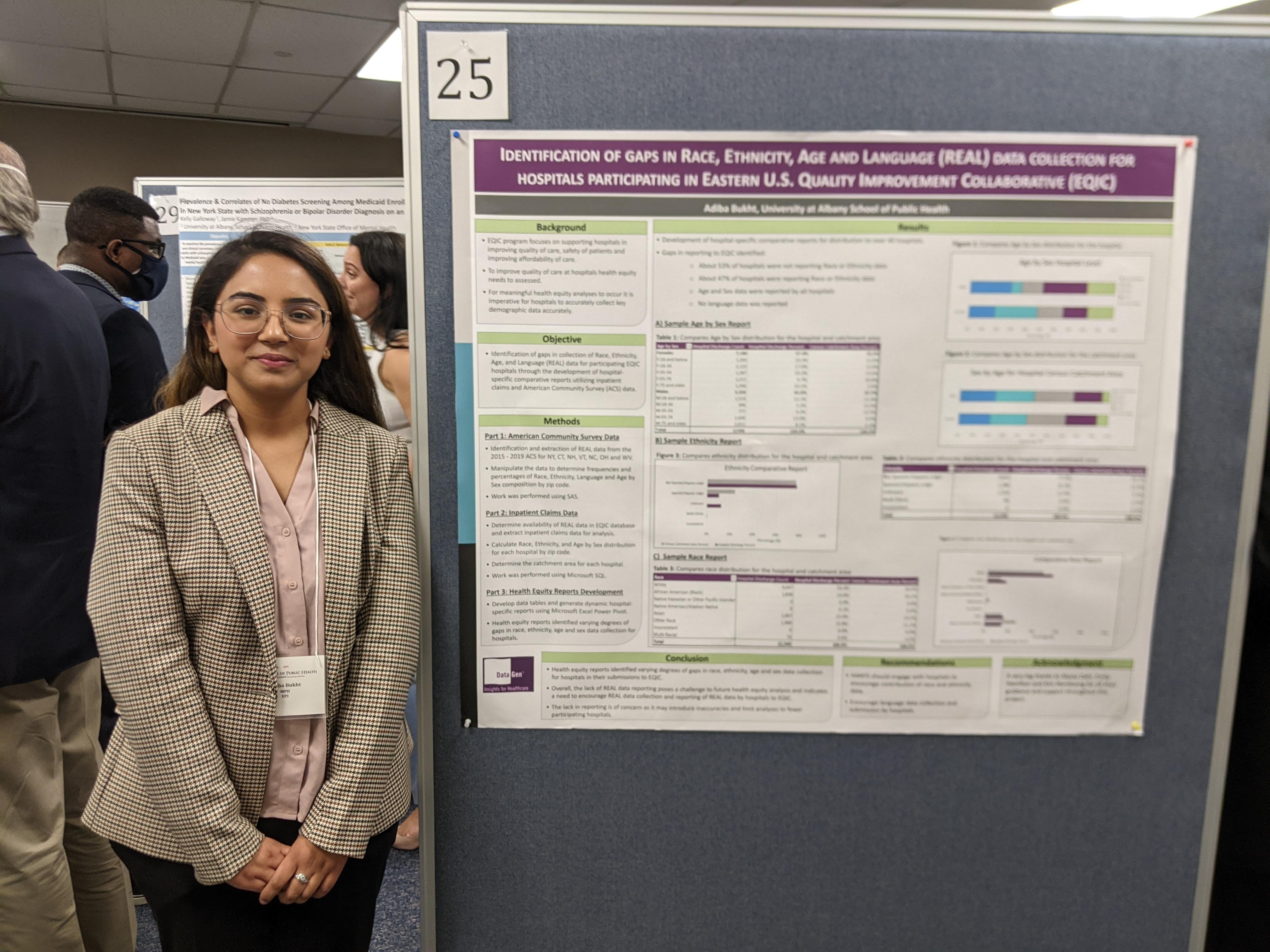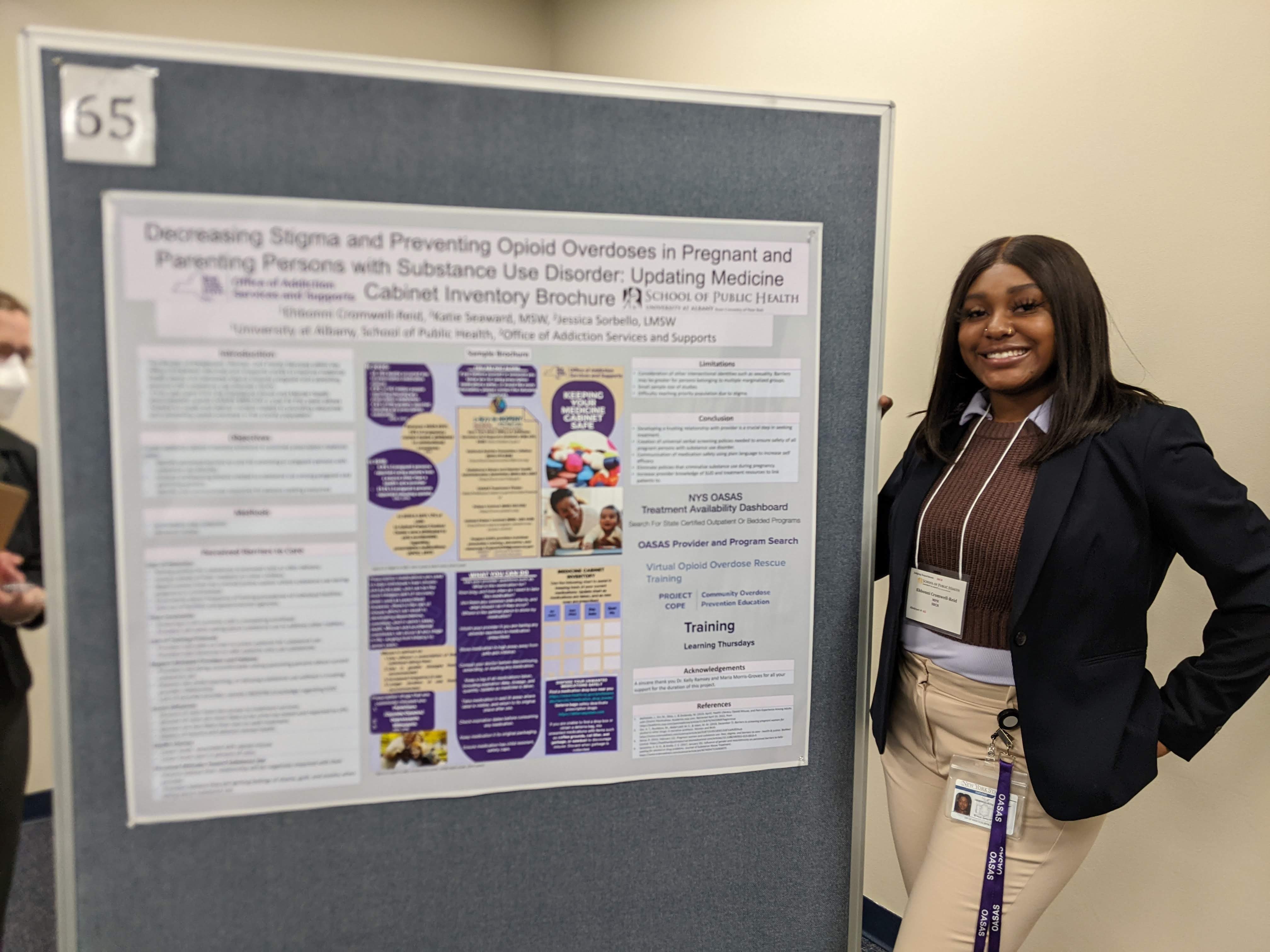Hands-On Learning at the School of Public Health
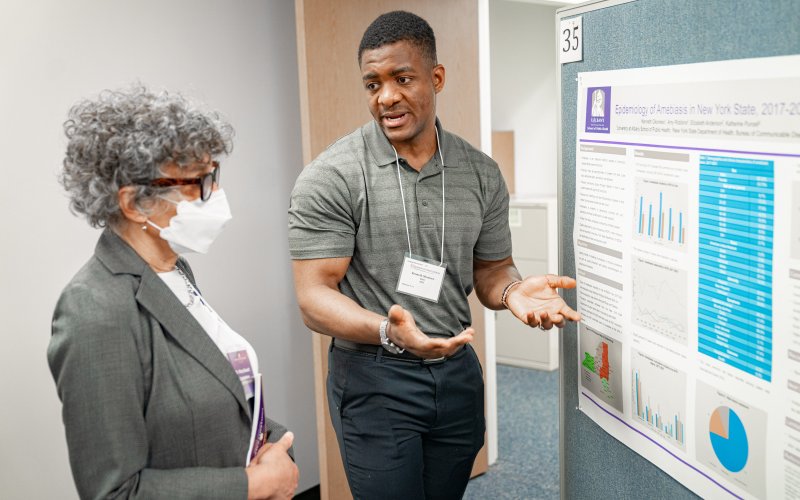
At the UAlbany School of Public Health, students gain practical and applicable hands-on experience through internships and research. They work with faculty, local community partners, government agencies, not-for-profits, and the New York State Department of Health, to name a few - and even join international projects and collaborations through UAlbany’s Center for Global Health. This past April, over 70 students presented their research and internship experiences during our 31st Annual Student Poster Day, hosted by the School of Public Health’s Office of Internships and Career Services. Below are a few examples of student work:
Interactive Dashboards for Covid-19 Data and Tickborne Illness Prevention
Since the start of the COVID-19 pandemic, the public’s interest in visualization of epidemiological data has grown. Agencies are tasked with meeting this demand in a manner that both educates and engages. Working at Schenectady County Public Health Services, MPH student Krystle Lawler created two interactive dashboards - one to provide COVID-19 epidemiological data on trends by strata and the second to address tickborne illness prevention education, as tickborne illness incidence rises alongside annual rising temperatures. QR codes linking to the tickborne illness dashboard were placed at all parks to encourage dashboard viewing.
Air Pollution and Birth Weight
PhD student Ese Oghaghare is studying the association between traffic-related air pollution and the risk of pre-term and low birth weight in urban-rural settings in selected counties in New York State. Birth registry data from the NYS vital statistics. He will test the hypothesis that living in a designated zip code and proximity/distance from emission source is a risk factor for pre-term birth and low birth weight. The relationship between ambient air pollutants and traffic density during pregnancy and preterm birth at different levels of gestational age at birth will also be examined.
RhlR DNA Binding to Control Virulence Factor Production in Pseudomonas aeruginosa
PhD student Kayla Simanek’s research with Jon Paczkowski determined that three arginine residues in a surface-exposed α-helix of PqsE, when mutated to alanine (PqsE-NI), disrupt the PqsE-RhlR interaction. Co-immunoprecipitation revealed that PqsE catalytic mutants could still bind RhlR while PqsE-NI did not. Importantly, PqsE-NI maintained catalytic activity, enabling us to parse the enzymatic and regulatory functions of PqsE. Gel shift assays revealed that RhlR has lower affinity for promoter DNA when PqsE interaction is absent. Consequently, pyocyanin production is abolished in a PqsE-NI variant. Differential expression patterns of selected genes within the RhlR regulon were similar for pqsE and pqsE-NI variants and indicative of virulence attenuation.
Maternal Health Outcomes of Women of Color in New York
Maternal mortality and morbidity disproportionately impact women of color in the United States and are exacerbated by systemic racism and other social determinants of health. MPH student Lauren Dorvil conducted a preliminary descriptive analysis, developed using qualitative and quantitative data, to examine maternal health outcomes for women of color across Albany County, Erie County, and Monroe County in New York State. Results found that poverty and lack of access to care were major themes in all three counties and had a significant impact on target interventions.
Proximity to Power Stations and Asthma Rates in New York
PhD student Ian Ryan gathered New York State power station data from the Energy Information Administration and emergency department visits for asthma (2013-2018) from the Statewide Planning and Research Cooperative System. Each asthma case was then matched to the closest power station and aggregated according to fuel type. Using zip code population, asthma rates were calculated in areas within and without 2.5 miles of a power station. Results showed that populations living near power stations experience more than two and a half times the asthma rate of the state combined and nearly ten times the asthma rate in areas away from any power station. Specifically, populations living close to battery-based power plants experienced 20.9 times as many asthma cases as the non-power station population, followed by petroleum, natural gas, hydroelectric, solar, biomass, wind, nuclear, and flywheels.
Gaps in Race, Ethnicity, Age and Language Data Collection in Hospitals
MPH student Adiba Bukht worked with the Eastern U.S. Quality Improvement Collaborative (EQIC) program and found varying degrees of gaps in race, ethnic and age by sex data collection for hospitals. For the 40 hospitals included, 53% were not reporting race and ethnic data to EQIC while 47% of hospitals were reporting race and ethnicity data. No hospital was reporting language data. Lack of race, ethnic and age by sex data reporting poses a challenge to future health equity analysis.
Decreasing Stigma and Preventing Opioid Overdoses in Pregnant and Parenting Persons with Substance Use Disorder
MPH student Ehbonni Cromwell-Reid worked with the Bureau of Adolescent, Women, and Family Services within the Office of Addiction Services and Supports, which aims to improve maternal health equity and decrease stigma specifically towards pregnant and parenting persons with substance use disorders. She helped to update a brochure that provides the priority population with information on how to update their medication cabinets to prevent accidental prescription drug overdoses.



